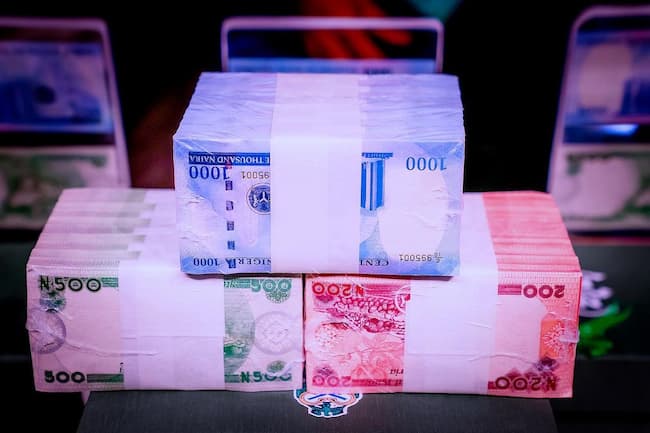The naira declined significantly during the official window due to a large disparity between demand and supply. On Wednesday, the official FX market saw an 8.25% decline in the exchange rate, closing at ₦1,669.15 per US dollar, according to FMDQ statistics.
Exchange rate volatility has risen to levels rarely seen in the official window, indicating that US dollars have grown increasingly limited to meet FX user demand. Analysts noted that without a robust FX sales program to support the naira across the markets, currency rates would continue to fall.
The Central Bank of Nigeria (CBN) discontinued retail Dutch Action FX sales in September following their resumption in August 2024. On the other side, the Apex Bank performed FX market intervention at the parallel market by selling US dollars to Bureau de Change (BDC) operators.
“Look at exchange rate in the black market, you will see that FX sales to BDCs have little or no impacts at all.
“Why did Apex bank sold FX to informal currency traders? What’s the CBN expectation by continuing to toll that line”, analysts asked in a chat with.
FX sales to authorised dealer banks also have minimal, one off impacts in the official market, analysts said. MarketForces Africa reported that external reserves crossed $38 billion on the back of sustained FX inflows into the economy.
But analysts said the sizeable amount in the foreign reserves has been pledged against various deals by the government and on behalf of the nation. This makes it difficult for the CBN to have a well-planned FX sale to reduce the US dollar shortage in the official and informal currency markets.
In the parallel market, the Naira closed at ₦1,684 to the dollar. The current gap between official and black market rates settled at N15, creating huge FX spread opportunities for speculators.
Last week, the Nigerian autonomous FX rate traded within the range of N1,530-N1,699, closing at N1,540.78 in the spot market. As of Friday, the current gap between the NAFEM and the parallel market rate ended the week at 10%.
According to data from FMDQ, total NAFEM turnover increased by 71.7%, or US$615.5 million, week on week to close at US$677.2 million on Friday. Meanwhile, the NAFEM window recorded an inflow of US$365.8 million.
The CBN accounted for 17.8% of the total inflow, foreign portfolio investors (FPIs) contributed 3.3%, non-bank corporates 26.4%, exporters 40.3%, and others accounted for 12.3%. Elsewhere, oil prices rose by over 1% but came off session highs as a bearish U.S. inventory build offset support from escalating tensions in the Middle East.
At the time of the report, Brent prices had increased by 0.45% to $73.94, while WTI prices saw an increase of 0.60% to $70.26.














